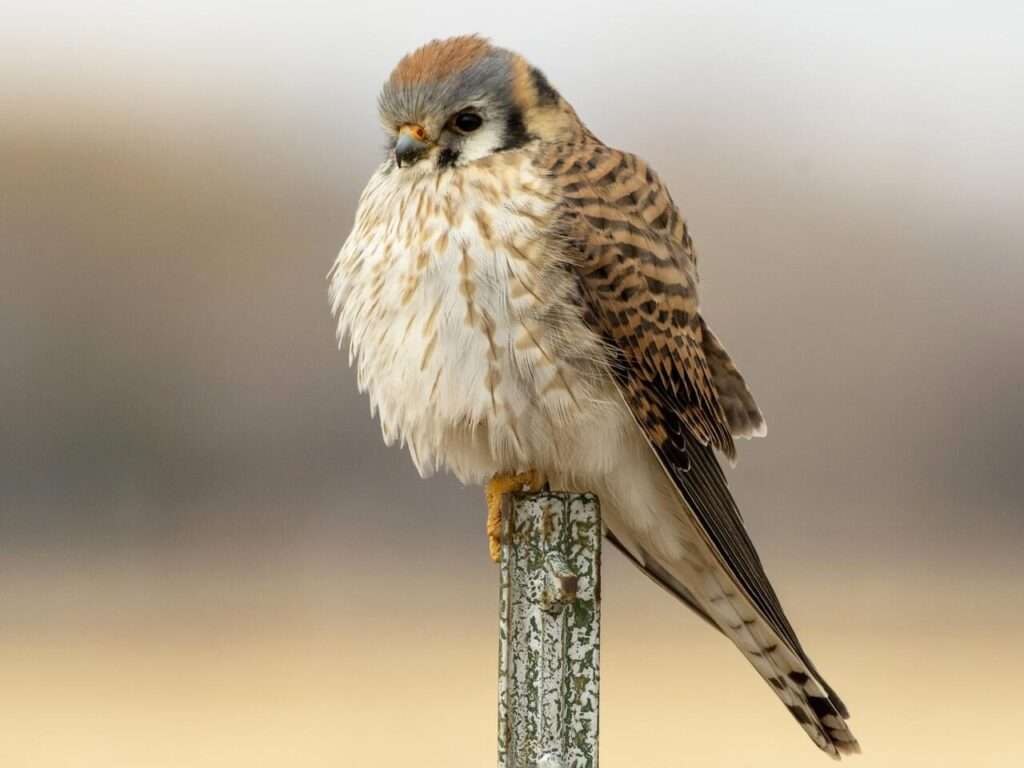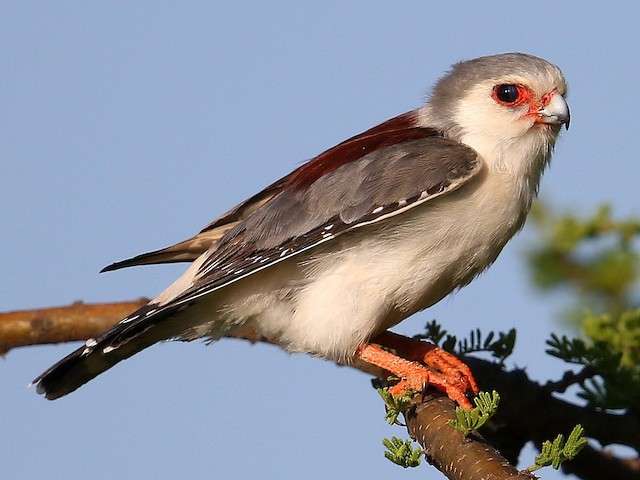
Description
Life span: 5- 10 years
Near open fields, perched on a tree branch or telephone wire, or hovering in search of prey are typical locations for American kestrels. The classic falcon has long, square-tipped tail and thin, pointed wings. The sizes of the sexes are similar. The adult male’s plumage may be distinguished from the adult female’s and both sexes’ juvenile plumage. They all have the distinctive falcon features of black eyes and two prominent, dark mustache lines that frame the white cheeks on the face. It hunts insects, small animals, and reptiles when perched or flying. Will hover above a field or soar in position above a hillside in high winds while its wings are beating quickly. With the wings folded back, the flight is swift, buoyant, and somewhat chaotic.
Male adult American Kestrels have rufous napped with black spots on either side and dark mustaches encircling their white cheeks. The lower back has black barring and the back is a vivid rufous color. A pattern of varied widths of black, white, or grey bands can be seen on the tail. dark primaries on wings that are blue-gray. The underparts have been cleaned in white and cinnamon. Adult females have a similar head pattern to males, except the crown is darker brown. Their subterminal tail band is significantly larger than other bands, and they have reddish brown backs, wings, and tails with dark barring. underparts are fluffy white with reddish stripes.

Native Region/Habitat
The American Kestrel favours open spaces with little ground cover and little tree coverage. Breeding takes place in an uncommon longleaf pine sandhill environment in the southeast of the United States. Kestrels need access to at least a few trees or buildings with appropriate nesting cavities when they are breeding. American Kestrels are regularly observed close to areas of human activity, such as towns and cities, and are drawn to a variety of human-modified habitats, including pastures and parkland.
Behavior
Typically, American Kestrels hunt during the day. A kestrel could spend the entire day perched on the same perch, searching for prey, or it might switch perches every few minutes. A kestrel will pounce on its food and seize it with either one or both of its feet. The bird will either finish a tiny meal on the ground or carry larger prey back to a perch. During the breeding season, males continually climb, dive, and call at the peak of each ascent to announce their territory. Food presents may be exchanged during a courtship; normally, the man feeds the female. Early on in pairing, groups of four or five birds may gather.
American Kestrels nest in cavities even though they are unable to create their own. They employ nooks in houses and other man-made structures, ancient woodpecker holes, natural tree hollows, rock crevices, and so on. The male scans the area for suitable nesting sites. He introduces potential prospects to the female, who ultimately makes the choice, once he has found any that are suitable. Nests are often located in trees, either in the midst of open terrain or towards the boundaries of woods.
As a pet/In captivity
These falcons may have been tamed to some extent, although only briefly. They have been carefully bred to be docile, adept hunters, and trainable. only to someone who is capable of giving the kestrel all it needs. Kestrels require a diversified diet, lots of space for flight, and a person willing to put in the effort necessary to tame and train them. In human care, kestrels are given a range of foods. Typically, pinkish or small mice, insects, and occasionally chicks are given to them. Prior to ingestion, all meats are thawed after being frozen. Because live prey can hurt the bird or have parasites that can infect it, this is considerably safer for it.
Table





